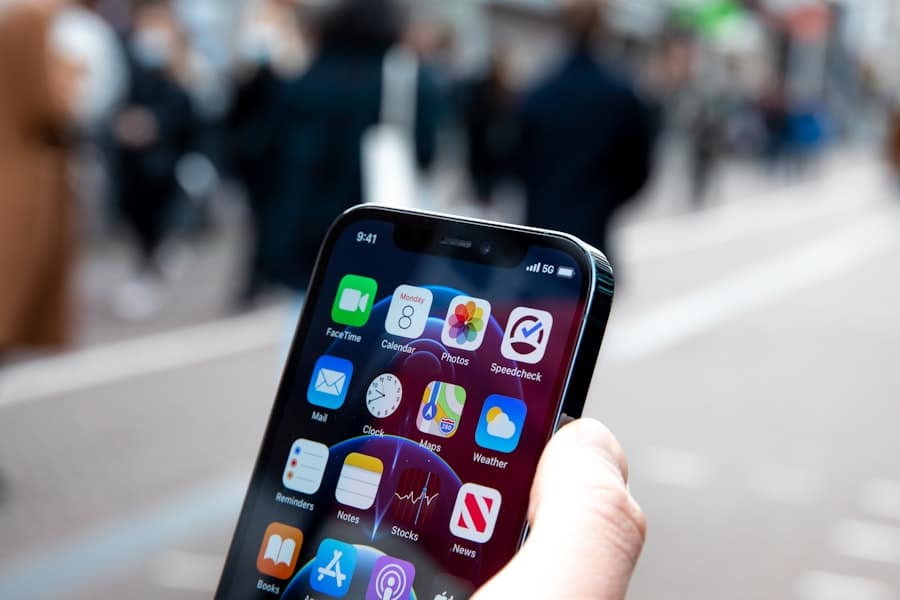The journey of communication technology has been a remarkable one, marked by significant milestones that have transformed the way humans interact. From the invention of the telegraph in the 19th century, which allowed for instantaneous communication over long distances, to the advent of the telephone, which brought voice communication into homes, each innovation has built upon its predecessors. The introduction of radio and television further revolutionized communication by enabling the dissemination of information to mass audiences.
The digital age ushered in a new era with the internet, fundamentally altering how people connect, share, and consume information. Email, social media, and instant messaging have become integral to daily life, creating a hyper-connected world where geographical boundaries are increasingly irrelevant. As technology has evolved, so too have the underlying infrastructures that support communication.
The transition from analog to digital systems has enabled faster and more reliable connections. The development of broadband internet and wireless technologies has facilitated the rise of mobile communication, allowing users to stay connected on the go. The introduction of 4G networks marked a significant leap in mobile technology, providing higher data speeds and improved connectivity.
This evolution set the stage for the next major advancement: 5G technology, which promises to further enhance communication capabilities and enable new applications that were previously unimaginable.
Key Takeaways
- Communication technology has evolved significantly over the years, from basic telecommunication to the advanced 5G networks we have today.
- 5G has a significant impact on the metaverse, enabling faster and more seamless virtual experiences for users.
- 5G plays a crucial role in enabling seamless virtual experiences, providing the high-speed connectivity necessary for immersive interactions in the metaverse.
- 5G has the potential to support high-resolution virtual reality, enhancing the visual quality and realism of virtual environments.
- Low latency is crucial in metaverse applications, and 5G technology is important in providing the fast response times needed for a smooth user experience.
The Impact of 5G on the Metaverse
The emergence of 5G technology is poised to have a profound impact on the metaverse, a collective virtual shared space that integrates augmented reality (AR), virtual reality (VR), and the physical world. With its high-speed data transfer capabilities and low latency, 5G is expected to facilitate more immersive and interactive experiences within the metaverse. This next-generation network can support a vast number of devices simultaneously, making it possible for users to engage in complex virtual environments without experiencing lag or interruptions.
As a result, the metaverse can evolve from a niche concept into a mainstream platform for social interaction, entertainment, education, and commerce. Moreover, 5G’s ability to provide consistent connectivity across diverse environments enhances the potential for real-time collaboration in the metaverse. Users can seamlessly interact with one another in shared virtual spaces, regardless of their physical locations.
This capability is particularly significant for industries such as gaming, where players can engage in multiplayer experiences that feel more cohesive and connected. Additionally, businesses can leverage 5G to create virtual storefronts or immersive training environments that mimic real-world interactions, thereby enhancing customer engagement and employee learning.
The Role of 5G in Enabling Seamless Virtual Experiences

One of the most compelling advantages of 5G technology is its capacity to deliver seamless virtual experiences that are essential for the metaverse. Traditional internet connections often struggle with bandwidth limitations and latency issues, which can detract from the overall user experience in virtual environments. In contrast, 5G networks are designed to handle high data volumes with minimal delay, allowing for smooth transitions between different virtual scenarios.
This capability is crucial for applications such as VR gaming or virtual meetings, where even slight delays can disrupt immersion and engagement. Furthermore, 5G’s enhanced bandwidth allows for richer content delivery within the metaverse. Users can experience high-definition graphics, realistic soundscapes, and interactive elements that respond instantaneously to their actions.
For instance, in a VR game powered by 5G, players can explore expansive worlds filled with intricate details without experiencing buffering or lag. This level of immersion not only enhances entertainment value but also opens up new possibilities for educational applications, where learners can engage with complex subjects through interactive simulations that feel lifelike.
The Potential of 5G in Supporting High-Resolution Virtual Reality
High-resolution virtual reality experiences require substantial data processing capabilities to render detailed graphics and maintain fluid motion. 5G technology is uniquely positioned to support these demands due to its high data transfer rates and robust network architecture. With speeds potentially exceeding 10 Gbps, 5G can facilitate the transmission of high-resolution video streams and complex 3D models in real time.
This capability is particularly important for applications such as architectural visualization or medical training simulations, where precision and detail are paramount. Moreover, 5G’s ability to support multiple devices simultaneously means that users can share high-resolution experiences without compromising performance. For example, in a collaborative design project within the metaverse, multiple architects can work together in a shared virtual space while viewing high-quality renderings of their designs.
This collaborative potential not only enhances creativity but also streamlines workflows by allowing teams to communicate and iterate on ideas in real time.
The Importance of Low Latency in Metaverse Applications
Low latency is a critical factor in ensuring that metaverse applications function smoothly and effectively. Latency refers to the delay between a user’s action and the corresponding response from the system. In virtual environments, even minor delays can lead to disorientation or frustration for users.
5G technology significantly reduces latency compared to previous generations of mobile networks, with potential latencies as low as one millisecond. This rapid response time is essential for applications that require real-time interaction, such as multiplayer gaming or virtual meetings. In gaming scenarios, low latency allows players to react instantly to in-game events, creating a more competitive and engaging experience.
For instance, in fast-paced first-person shooters or racing games, players rely on immediate feedback from their actions to succeed. Similarly, in virtual reality environments where users interact with digital objects or avatars, low latency ensures that movements are accurately tracked and reflected in real time. This level of responsiveness is crucial for maintaining immersion and preventing motion sickness, which can occur when there is a disconnect between a user’s movements and their virtual representation.
The Scalability of 5G Networks for Metaverse Growth

As the metaverse continues to expand and attract more users, scalability becomes a vital consideration for communication networks. 5G technology is inherently designed to be scalable, accommodating an increasing number of devices without sacrificing performance. This scalability is particularly important given the anticipated growth of the metaverse as more individuals and businesses seek to establish a presence within these virtual spaces.
The architecture of 5G networks allows for dynamic resource allocation based on demand. This means that during peak usage times—such as major events or product launches—networks can adapt to ensure that users experience minimal disruptions. Additionally, the ability to connect a vast number of devices simultaneously enables innovative applications such as smart cities or IoT ecosystems within the metaverse.
The Integration of 5G with Edge Computing for Metaverse Applications
The integration of 5G technology with edge computing represents a significant advancement in enhancing metaverse applications. Edge computing involves processing data closer to the source rather than relying solely on centralized cloud servers. This approach reduces latency and improves response times by minimizing the distance data must travel before being processed.
When combined with 5G’s high-speed connectivity, edge computing enables real-time data processing that is essential for immersive experiences within the metaverse. For instance, consider an augmented reality application used for remote collaboration in industrial settings. With edge computing capabilities integrated into a 5G network, data from AR devices can be processed locally at the edge rather than being sent back to a distant server.
This allows for instantaneous updates and interactions between users working on complex tasks together in real time. Such applications not only enhance productivity but also create safer working environments by providing immediate access to critical information without delays.
The Future of Metaverse Infrastructure with 5G Technology
Looking ahead, the future of metaverse infrastructure will be heavily influenced by advancements in 5G technology. As more users engage with virtual environments for various purposes—ranging from social interaction to professional collaboration—the demand for robust and reliable communication networks will only increase. The continued rollout of 5G networks worldwide will provide the necessary foundation for this growth, enabling richer experiences that were previously unattainable.
Moreover, as developers create more sophisticated applications tailored for the metaverse, they will leverage the unique capabilities offered by 5G technology. Innovations such as holographic displays or fully immersive VR experiences will become more feasible as network speeds increase and latency decreases. Additionally, as businesses recognize the potential of the metaverse for marketing and customer engagement, they will invest in creating virtual spaces that reflect their brand identities while utilizing 5G’s capabilities to enhance user experiences.
In conclusion, the intersection of 5G technology and the metaverse represents an exciting frontier in communication technology. As both continue to evolve together, they will shape how individuals interact with digital content and each other in profound ways. The potential applications are vast and varied, promising a future where virtual experiences are seamlessly integrated into everyday life.
In exploring the critical role of 5G as the backbone of the metaverse infrastructure, it’s essential to consider how advancements in technology, such as smartphones, enhance user experiences in this immersive digital landscape. For instance, understanding how to select the right device can significantly impact gaming and metaverse interactions. For more insights on this topic, check out the article on com/how-to-choose-the-best-smartphone-for-gaming/’>how to choose the best smartphone for gaming.
FAQs
What is 5G?
5G is the fifth generation of wireless technology, designed to provide faster and more reliable internet connectivity for mobile devices and other applications.
What is the Metaverse?
The Metaverse is a collective virtual shared space, created by the convergence of virtually enhanced physical reality and physically persistent virtual reality. It is used to describe a future iteration of the internet, made up of persistent, shared, 3D virtual spaces linked into a perceived virtual universe.
How is 5G related to the Metaverse infrastructure?
5G is the backbone of the Metaverse infrastructure because it provides the high-speed, low-latency connectivity required for immersive virtual experiences, real-time interactions, and seamless integration of virtual and physical environments.
What are the benefits of using 5G for the Metaverse?
Using 5G for the Metaverse enables high-quality, real-time virtual experiences, supports a large number of simultaneous users, and allows for seamless integration of virtual and physical environments.
How does 5G support virtual reality (VR) and augmented reality (AR) applications in the Metaverse?
5G supports VR and AR applications in the Metaverse by providing the high-speed, low-latency connectivity required for immersive experiences, real-time interactions, and seamless integration of virtual and physical environments.

